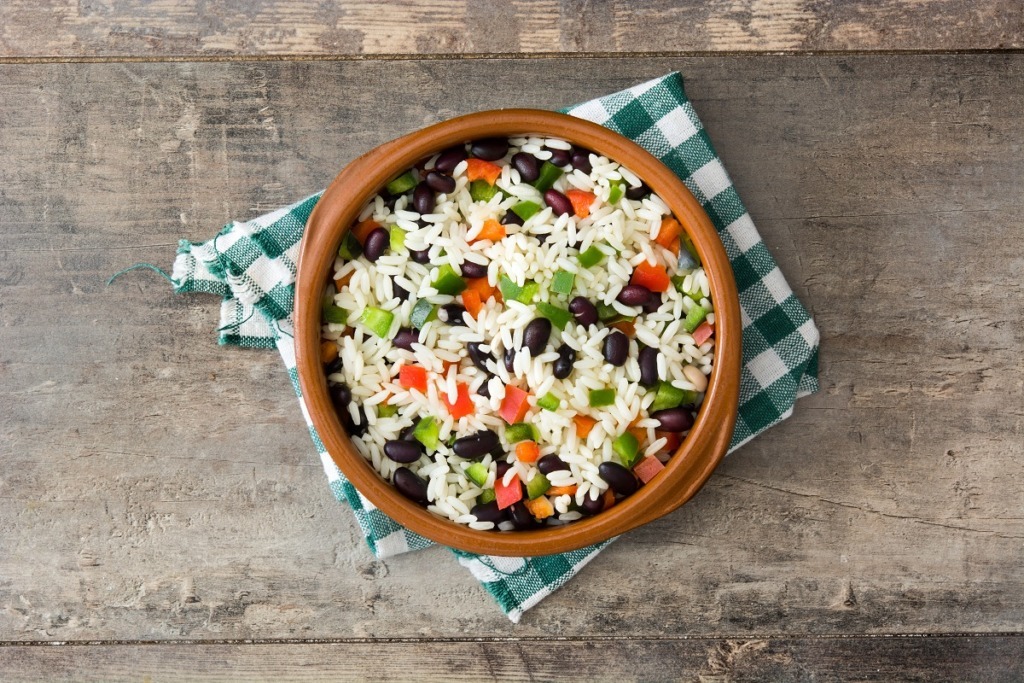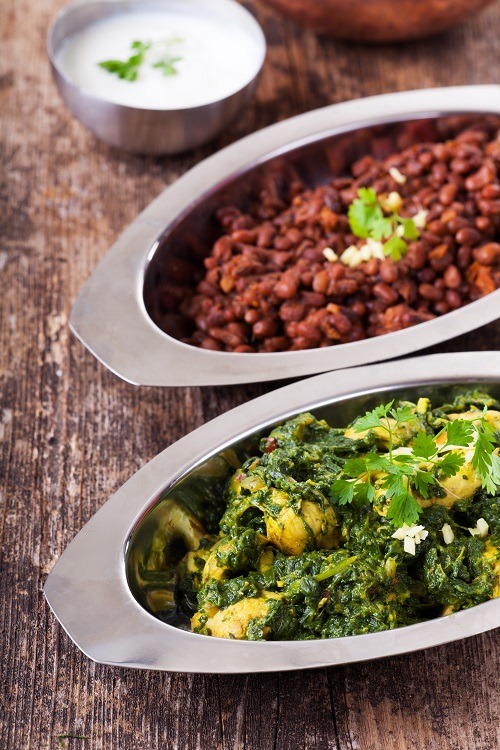
Written by Orsolya Bartalis
Cuba, a beautiful island nation with turbulent history and a 60-year embargo that has turned the amazing place into somewhat of a time capsule. It feels charming to see the beautiful old cars from 1950’s, 1960’s (and even not so beautiful ones from 1970’s), and the picture perfect pastel coloured buildings for your post card, yet these weren’t created to win your heart. They developed out of necessity with the ingenuity of the Cuban people to make the best use of what they got. Their resourcefulness, flexibility and adaptability doesn’t stop there, it also arches out to food.
The Cuban Staples
I’ve got to be honest with you, traveling as a vegan may have its challenges in Cuba. Their traditional diet consists of pork, seafood, rice, beans, and seasonal vegetables, whilst a typical tourist breakfast in Cuba includes only bread (Cuban bread is usually vegan), butter, eggs, cheese, fruit, and sometimes ham. Until this year, Cuban families were provided rations of staples, like rice, chicken, eggs, and beans. With food shortages being a regular occurrence, they are not fussy eaters, so do not be offended if they don’t understand your choice to be vegan. Veganism just isn’t a thing in Cuba yet.
Whilst restaurants in tourist areas are picking up on this new ‘trend’, their vegan menu options are still in their infancy. Things like Hummus is only just making it onto the menu, and if you are somewhere fancy, you may even find a vegie burger. Top tip, do not eat at the tourist restaurants!
Where to stay
Best thing you can do when you are traveling Cuba as a vegan is to stay in a casa particular. Casas are private homes that are rented either fully or partially by their owners. It’s one of the only private business opportunities Cubans have currently, so your stay will support many people in the community from the casa owner, their family as well as the local grocer (remember the resourcefulness?).
Most casas will offer you breakfast – choices for vegans for breakfast includes a variety of seasonal fruits, from deliciously sweet pineapple to oranges, guavas, bananas, coconut, mango, and papaya. You can have these cut up or juiced. Of course, there’s the delicious Cuban coffee, as well as bread.
Things like almond milk, oat milk, rice milk are not readily available and even coconut milk will be scarce to find, so if you don’t like your coffee black, you may wish to bring your own ‘milk’ powder supply. Same goes for spreads, whilst you may find jam, peanut butter is scarce. Other breakfast foods that aren’t typically available in Cuba but are easy to pack include oats, nuts, trail mix and protein bars.
Some casa owners will also be happy to make you meals for lunch and dinner, if you explain to them your dietary needs there are several options, they can cook for you depending on availability. What’s even better, you could accompany them to the market to purchase supplies for your meals. That is a whole new experience, trust me, best done with a local!
Grocery shopping in Cuba requires creativity, patience, knowing the suppliers and a lot of time. One-stop shop supermarkets don’t exist, and the markets that do exist will seem lacking. Your typical store may only have a few items available. Which means that the locals will go around to not just the markets, but other suppliers to ensure they get what they need to prepare a meal.
You’ll also likely to meet a produce cart or random vendors selling basics like bananas, papaya, guava, plantains, yucca, onions, garlic, and tomatoes. Depending on what they have available at the time. Markets and suppliers run out early, so it’s best to go shopping in the morning.
Shopping for your own produce can mean cheaper meals during extended visits, but given the challenge required to find veggies in Cuba and the low price of home cooked meals, eating at the casa is often a far better option.
Vegan Meal Options

Your host be able to cook you up things like vegetable soup, but since vegetarianism and veganism are so unfamiliar in Cuba, you may have to insist on no meat or bones to be added to the stock
Beans and rice are a staple so that will be an easy option, can even have it accompanied with a ‘salad’ but don’t be surprised if that only means cucumber or tomato on it’s own, or occasionally including some cabbage. Dressings are generally limited to lemon juice and olive oil.
And to go on about the beans… Cubans are the greatest experts at cooking them. Black beans, white beans, kidney beans, all the various lentils and chickpea dishes you can enjoy out there - the bean possibilities really are endless. They’re super cheap, delicious and a great source of protein. Although you may want to check that they were not cooked in a bone broth.
Fried plantains are a staple of the Cuban diet, and they’re delicious!
You may also find sweet potatoes, eggplants, avocados – which are huge! So, you will certainly not go hungry. But may want to pick the season that’s abundant with fruit and vegetable options.
Cuban Hospitality
One thing to be aware of is that Cuban’s are very hospitable. You may find that by the time your taxi driver has driven you to your casa from the airport, he’s also invited you to the next family BBQ. So be aware of their cultural norms. Being vegetarian/vegan is uncommon, not entirely understood, and since ‘food is love’ and refusing a meal is unheard of, they can get offended if you do so.
Whilst joining a fiesta is an amazing cultural experience, be prepared to walk this fine line if you do. It may help to learn some Spanish phrases before you go.
Things like:
- aguacate (avocado)
- arroz (rice)
- ensalada (salad)
- frijoles or abichuela (beans)
- fruta (fruit)
- pan (bread)
- papas (potatoes)
- tostones (fried green plantains)
- tomate (tomato)
- pepino (cucumber)
- garbanzos (chickpea)
- verdure (vegetable)
- along with some phrases like,
- Yo soy vegano/a – I am vegan
- No como ningún producto de origen animal – I don’t eat any animal products
- ¿Este plato contiene carne/ lácteos/ huevo/ pescado? – Does this dish contain meat/ dairy/ egg/ fish?
- ¿Puedo pedir esto sin...?- Can I order this without...?
- ¿Usted me puede cocinar...? - Could you please cook...?
Let’s face it, travelling anywhere as a vegan can be challenging. Even in a country where you speak the language it can be hard to gauge what’s vegan and what’s hiding a sprinkling of cheese, spoonful of honey or some egg bind. In Cuba, it can be a whole new level with the choice options and needing to speak Spanish. Traveling with a small group, your tour guide will be able to help you with your food choices whilst you are out and about and in putting you with the most fitting casa owner. What will also help you on your Cuban holiday is pack some mixed nuts, protein bars as fallback options.
Traveling Cuba as a Vegan Traveling Cuba as a Vegan Traveling Cuba as a Vegan Traveling Cuba as a Vegan Traveling Cuba as a Vegan Traveling Cuba as a Vegan Traveling Cuba as a Vegan



